As cities developed at odd intervals across the United States throughout the nineteenth century they found they required infrastructures for transporting their citizens. Mass transit was born. Most cities adopted some sort of system that involved cars on rails. The major difference among these systems was the method of power. A few cities adopted either steam or cable power. While steam power was noisy and caused pollution, each was a maintenance nightmare. Most cities relied on horses, and some of these cities extended their lines to include outlying areas. However, the range and pace of these lines was limited by the stamina and speed of their horses. Additionally, an epizootic epidemic in 1872 crippled transportation in almost every North American city.
Electrification of rail service was necessary to bridge this disparity. Early experiments with battery-powered cars failed. The advent of the dynamo led to the electrification of streetcars, which in turn led to the interurban.
The interurbans seemed to fill a travel void for much of America. Aside from what slow, infrequent, grimy local passenger service might be available from the steam railroads, rural America was pretty well restricted to whatever lay within horse and buggy range. The interurbans were bright and clean, stopped almost everywhere, and ran far more frequently than the steam trains, for one car made a train. Once in town the cars usually operated through the streets and went right downtown. They were almost always cheaper than steam trains, too.Rails could connect cities to their suburbs. Extended further they could service rural communities, making regular travel to "the city" reasonable.
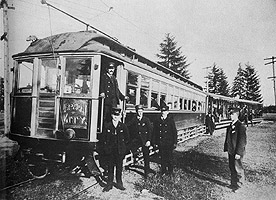
|
The first two "true" interurbans in the country each began service in 1893. The fifteen-mile East Side Railway, which began operating in February of that year, connected Portland and Oregon City. Note that this car is also pulling two open trailers. |
| Later in that same year the twenty-mile Sandusky, Milan & Norwalk Line began operation in Ohio.(Middleton 12) | 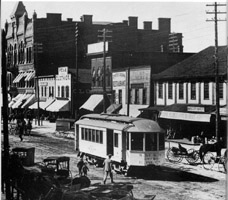
|
The definition of the interurban may seem arbitrary. It is important to distinguish the interurban from the streetcar on one side and the steam locomotive on the other. Hilton is helpful here. He suggests "the term interurban may be applied to railways that shared most or all of the four following characteristics: electrical power, primary emphasis on passenger service, equipment that was heavier and faster than city streetcars, and operation on streets in cities but at the sides of highways or on private rights-of-way in rural areas" (9). This is a hierarchical definition: an interurban almost certainly relied on electricity, and also fit at least two of the other characteristics. Also, while streetcars were typically open-air affairs, most interurbans were either fully enclosed, partially enclosed, or convertible.
 With advancements in technology interurban systems sprung up across the country. By approximately 1920 just about every metropolitan area in the country could boast interurban service. Before the 1930's were over, the interurban was almost dead. The spirit of the interurban has been revived in the "light rail" movement of recent decades. Some would argue that the demise of the interurban in the middle of the twentieth century set the United States behind every other major country in terms of rail infrastructure.
With advancements in technology interurban systems sprung up across the country. By approximately 1920 just about every metropolitan area in the country could boast interurban service. Before the 1930's were over, the interurban was almost dead. The spirit of the interurban has been revived in the "light rail" movement of recent decades. Some would argue that the demise of the interurban in the middle of the twentieth century set the United States behind every other major country in terms of rail infrastructure.
The rest of this site is divided into three sections. "Exteriors and Interiors" offers a glimpse of what a typical interurban car looked like. "Two Regions" describes the very different systems that serviced New England and the Midwest. The conclusion examines the competition between the interurban and other modes of transportation and why the interurban lost.
| Exteriors & Interiors | Two Regions | Conclusion |
|---|---|---|
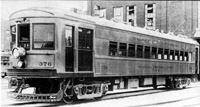 Exteriors |
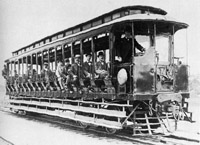 New England |
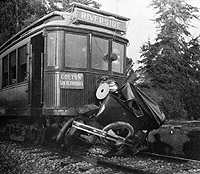 Competition |
 Interiors |
 Midwest |
 Why Interurban Lost |
 > > |
SOURCES |  |